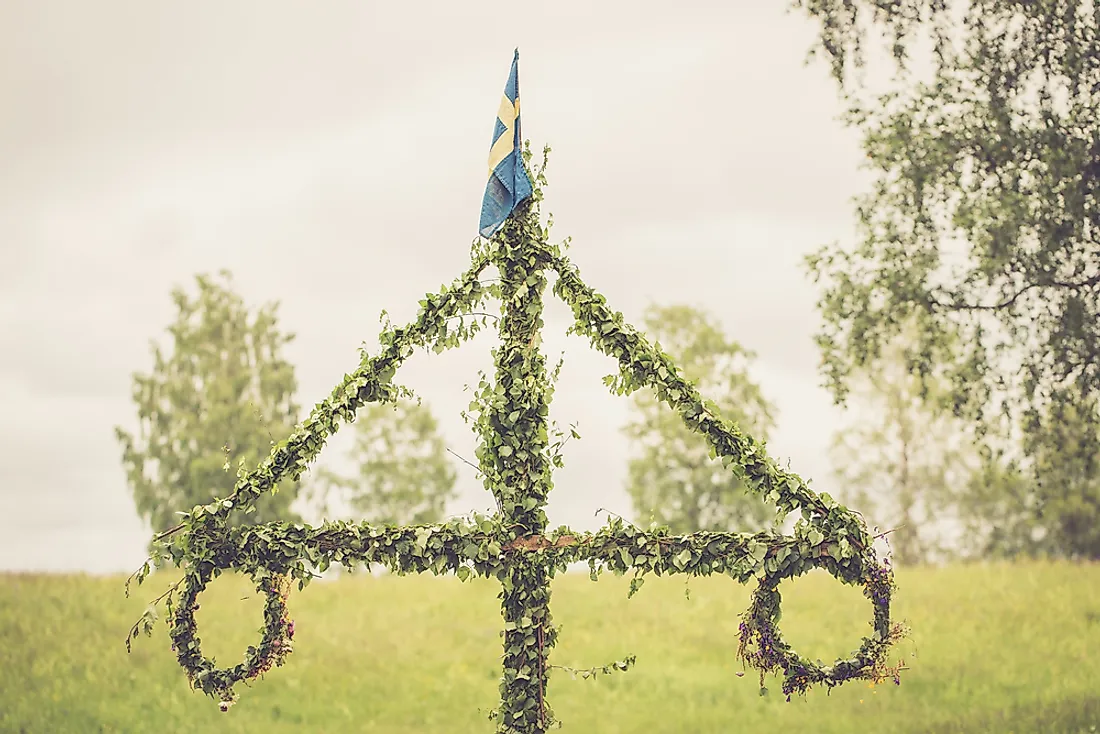What is Midsummer?

Midsummer, also known as St John's Day, is celebrated in Sweden. Midsummer is mainly centered on the summer solstice and Midsummer's Eve falls on a Friday between June 19th and June 25th. Northern European celebrations might also choose to accompany the actual date when the summer solstice takes place. However, the precise dates for Midsummer vary depending on culture. Midsummer is also known as Ivan Kupala Day, Summer Solstice, and Adonia among others. Midsummer celebrations involve communities coming together, feasting, festivals, singing, Maypole dancing, and lighting bonfires.
Background of Midsummer
In Europe, celebrations, holidays, and traditions related to Midsummer are of pre-Christianity origin. These celebrations are quite important to the northern European countries of Denmark, Sweden, Finland, Estonia, Latvia, Lithuania, and Norway. However, Midsummer celebrations are also strongly observed in Germany, Poland, Netherlands, Belarus, Russia, Ireland, and other parts of the Southern hemisphere, the UK, and the US.
The History of Midsummer
Midsummer's Eve celebrations originated from the ancient times as a festival for the summer solstice. During the festival, bonfires were lit up because it was believed to wade off the evil spirits that were roaming around as the sun started turning southward. Later on, it was believed that the witches would hold their meetings during this time together with other supernatural beings. Since the Neolithic times, the solstice has managed to remain a memorable moment of the year's annual cycle. In Sweden, Midsummer’s Eve is regarded as the country's most important festival of the year similar to Christmas Eve, New Year's Eve, and Walpurgis Night. The same is also observed in Latvia, Estonia, and Finland. Ancient Romans held a similar event on June 20th in honor of the god Summanus.
Sweden's Celebration of the Festival
In Sweden, Midsummer is celebrated by families and the community as a whole. Midsummer falls on a Saturday anywhere between June 20th and June 26th. However, the festival was traditionally observed on June 24th. Currently, the Swedish have the actual celebration on Midsummer's Eve. Due to its popularity, the event has earned a holiday status in the country.
Midsummer Tradition
Placing greenery over barns and houses is an old tradition that has been observed from antiquity until today. However, most people do not take this old tradition seriously. Decorating with greens is believed to bring about good fortune and health amongst the people and their livestock. The act of decorating with greens was known as att Maja translated to English as ‘to may.' The word may be the origin of the term majstång, Maja was originally derived from the month of May. However, other academics claim that the term originated from German merchants who hoisted the maypole in June since the Swedish climate was not favorable enough for them to find any flowers and vegetation during the month of May, hence the name maypole. At present, maypole is most commonly referred to as a midsommarstång which translates to midsummer pole in English. However, during earlier times, greens were wrapped into small sized spires and erected up pre-dating the maypole tradition. It was believed to have originated from the Middle Ages meaning, and the German merchants have little or no influence regarding Midsummer.
The Importance of Midsummer in Sweden
In Sweden, Midsummer is such an important festival that the country is even considering making Midsummer Eve the National Day of Sweden instead of June 6th. Midsummer may also be referred to as St. Hans Day. The Swedish people take pride and joy celebrating Midsummer.











